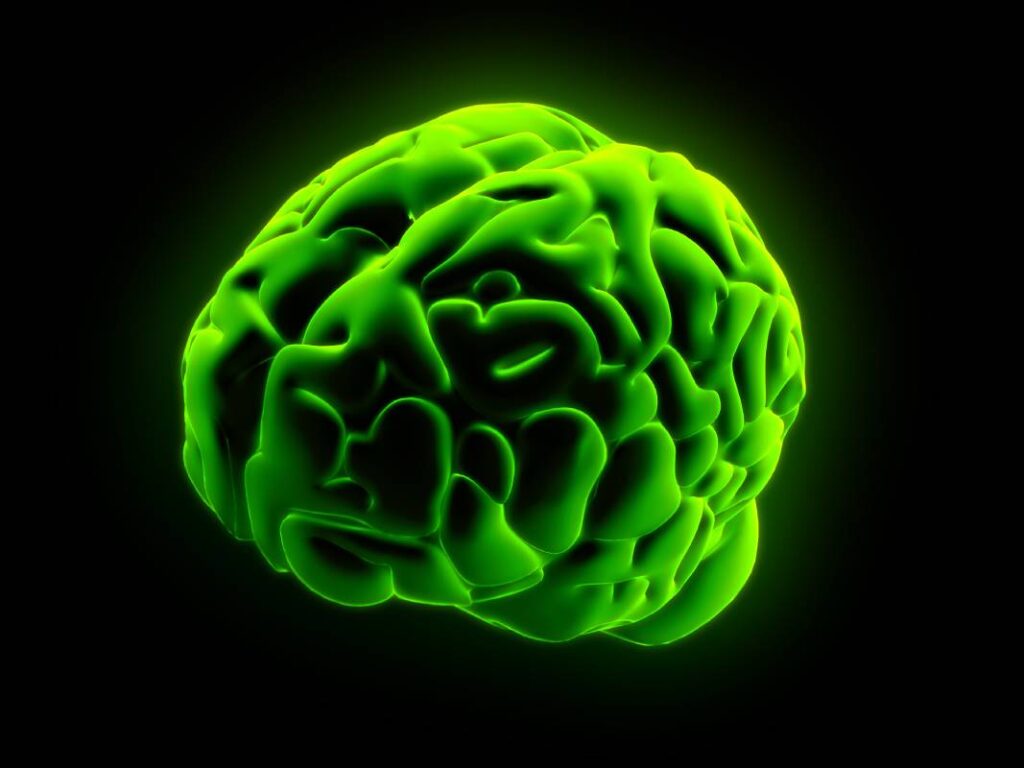While the sensation of pain is ubiquitous, the report of or reaction to pain can differ dramatically across species and individuals. Researchers have divided the perception of pain into two branches: the ‘sensory-discriminative’ and ‘affective-motivational’ components.1 The former refers to information regarding the location, modality, or intensity of stimuli that can be captured by the neuronal structures, physiology, and biochemistry involved in pain perception. The latter branch includes the emotional and motivational responses to the somatic sensation. This component is typically present in the language or behavior associated with pain.1 An active area of research seeks to understand the influence of cortical regions in our brains on pain perception.
Research shows clear cortical influence on the sensory-discriminative component of pain perception. Information from sensory neurons is carried to second-order neurons in the dorsal spinal horn of the spinal cord. These neurons relay this information to the lateral thalamic nuclei, which in turn project to several important cortical areas, most densely the primary somatosensory cortex.1 Around 5% of spinothalamic fibers terminate in the ventral posterolateral thalamic nucleus (VPL) and around 30% target the ventral posterior inferior nucleus (VPI). Neurons of the VPL send their axons to the primary somatosensory cortex, which translates directly into sensory-discriminative information, i.e. information about the ‘when,’ ‘where,’ and ‘how strong.’ Neurons from the VPI send their axons to the secondary somatosensory cortex, which is involved in sensory-discriminative functions but may also have a role in higher-order cognitive functions, such as memory, cortical processing, and decision-making.2,3 Another 40% of spinothalamic fibers targets the posterior group of thalamic nuclei, including the posterior nucleus, suprageniculate nucleus, and the anterior pulvinar nucleus. Relay neurons receiving this input project to the posterior insular cortex. Because this connection is highly involved in nociceptive processing and cognitive aspects of pain, it is included in the sensory-discriminative branch of pain perception.2
Unlike the sensory-discriminative pathway, the central nervous system structures and pathways that make up the affective-motivational branch of pain are not as well defined. However, the existence of this branch is well accepted in the literature; phenomena like phantom limb pain and proprioceptive drift that demonstrate high-level processes involved in pain perception indicate that there is more to pain than just the sensation itself.4 Cortical processes that influence this branch of pain perception are thought to be initiated by the remaining ~25% of spinothalamic tract fibers which terminate in the medial thalamus.2,5 These cells then project to the anterior cingulate cortex and the prefrontal cortex. As a result, these projects mediate attention-based orientation, motor aspects, and the emotional component of pain perception.2 It has also been suggested that the affective components of pain are critical to experiencing empathy. A seminal 2004 study used functional magnetic resonance imaging to assess BOLD responses for individuals experiencing a painful stimulus and observing their loved one receive a similar stimulus. Bilateral anterior insula (AI), rostral anterior cingulate cortex (ACC), brainstem, and cerebellum were activated when subjects received pain and when they observed it. However, only the activation seen in higher-order cortical regions (AI and ACC) correlated with individual empathy scores. The authors conclude the part of the pain neural network that is associated with the affective component, but not the sensory component, mediates empathy.6
These studies support the idea that the perception of pain can be separated into the sensory-discriminative and the affective-motivational components, and that diverse cortical areas can influence it. Although the neuronal pathways for these two branches begin similarly, the higher-order cortical regions of either branch are distinct from one another. Just as lesions of the primary somatosensory cortex can make us unable to locate or describe cutaneous input, lesions of the prefrontal and cingulate cortices reduce emotional description of, or reaction to, pain.1 Further research is needed to close the knowledge gap on the different components of pain perception.
References
- Ohara, P. T., et al. “Cortical Modulation of Pain.” Cellular and Molecular Life Sciences CMLS, vol. 62, no. 1, Jan. 2005, pp. 44–52, https://doi.org/10.1007/s00018-004-4283-9
- Kuner, Rohini, and Thomas Kuner. “Cellular Circuits in the Brain and Their Modulation in Acute and Chronic Pain.” Physiological Reviews, vol. 101, no. 1, Jan. 2021, pp. 213–58, https://doi.org/10.1152/physrev.00040.2019
- Raju, Harsha, and Prasanna Tadi. “Neuroanatomy, Somatosensory Cortex.” StatPearls, StatPearls Publishing, 2024. PubMed, http://www.ncbi.nlm.nih.gov/books/NBK555915/
- Rohde, Marieke, et al. “The Rubber Hand Illusion: Feeling of Ownership and Proprioceptive Drift Do Not Go Hand in Hand.” PLoS ONE, vol. 6, no. 6, June 2011, https://doi.org/10.1371/journal.pone.0021659
- Auvray, Malika, et al. “The Sensory-Discriminative and Affective-Motivational Aspects of Pain.” Neuroscience & Biobehavioral Reviews, vol. 34, no. 2, Feb. 2010, pp. 214–23, https://doi.org/10.1016/j.neubiorev.2008.07.008
Singer, Tania, et al. “Empathy for Pain Involves the Affective but Not Sensory Components of Pain.” Science, vol. 303, no. 5661, Feb. 2004, pp. 1157–62, https://doi.org/10.1126/science.1093535

